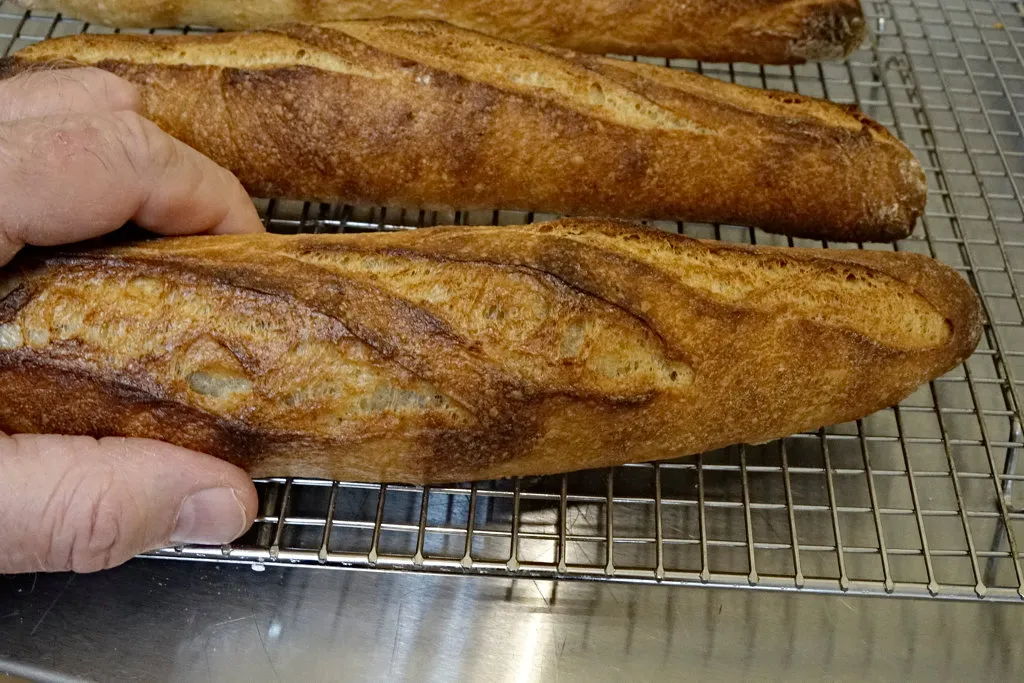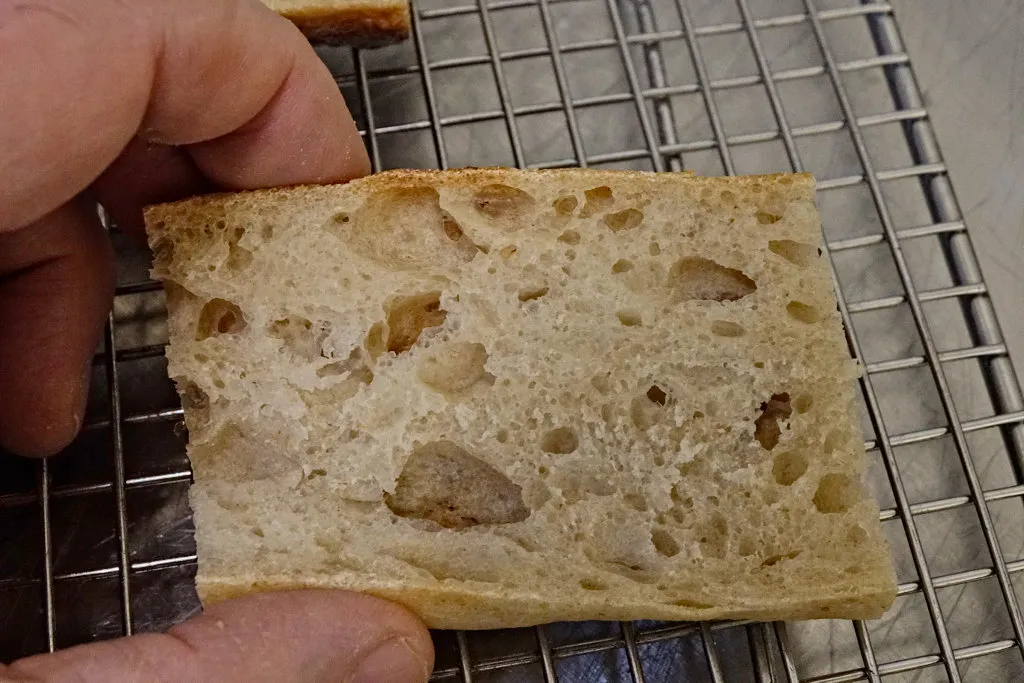
As soon as one thinks about baguettes, the matter of French T55 flour comes up (sometimes T65 as well). It's been discussed many times on TFL, and any internet search will get you many opinions too. I'm in the US, and I would naturally like to use flours I can easily get.
I have never had my hands on T55. I'm getting into learning how to bake a decent baguette, so of course I wonder whether using it makes much difference.
T55 is characterized by its ash content, specified in France as 0.55% of the flour weight, left over after the flour is completely burned. US all-purpose flour is said to have less ash, so the usual advice is to add some whole wheat flour to increase the ash level. T55 is also said to have a relatively low protein content relative to many US flours.
But I noticed that many descriptions of T55 talk about its fineness and its "creamy" color. There are claims that French millers mill the flour differently, but I haven't found out what this supposed difference is. There are also claims that the wheat used for T55 can only be sourced from France. But then I read that most French wheat comes from the US or Canada. So many things are up in the air.
As I thought about the reports of its fineness, I thought that using WW as is wouldn't be ideal since it's normally got larger bran bits. So I decided to sift my stone-ground WW through a #30 screen instead of using it as milled. I also sifted the AP flour using a #50 screen. My AP flour mostly went though but left a little behind.
I chose Gold Medal Unbleached All-Purpose because it has a moderate protein flour for an AP. Now, how much sifted WW? I had read suggestions to use 5%, so that's what I used. I may start increasing the amount in the future, but this worked well.
I made a batch of three half-length sourdough baguettes (the longest my home oven can do) and they came out very nice for a beginner. The flavor had more richness than I thought an all-white bread would have.
Next, I decided to use sifted emmer instead of sifted WW. I have some left over from months ago. I expected the emmer to bring a little richer flavor and a little more extensibility, not a bad thing for baguettes. I've made the emmer variety three times now, and I think they are very good. This whole experience is bring me around to really appreciating baguettes, which I didn't used to.
Here the crumb of today's bake, using the emmer simulated T55. My handling skills are slowly improving, and so is the crumb. Hydration is 69% including starter, starter weight is 30% of flour weight. The dough was refrigerated overnight somewhat before it had doubled in bulk ferment.

The emmer has, I think, lived up to my hopes for it. Today's bake seems a tad overbaked and was proofed a little too long, I think. Still, all of these bakes with simulated T55 have come out with a lovely crackly-but-not-tough crust and a soft pleasant crumb. I have a ways to go with baguettes but I'm happy already.
TomP
Personally, when it comes to the question of T55 I always think of a saying from the old country that translates roughly as "same brand, different hand".
I think cake flour is going to be closer to T55. This Central Milling pastry flour comes in at .55% ash and 9% protein. Cake flour is rare in our supermarkets these days but my grocer occasionally stocks this which I use for pâte feuilletée, pie crust, etc. Have not tried baguettes with it.
My standard baguettes are currently 90% AP and 10% (I keep decreasing…) bread flour. Have recently pushed hydration from 67% to as high as 80% but am hovering at 72% now. Higher hydration makes for tougher to handle dough, but improves crumb.
Phil